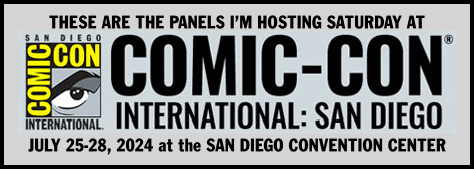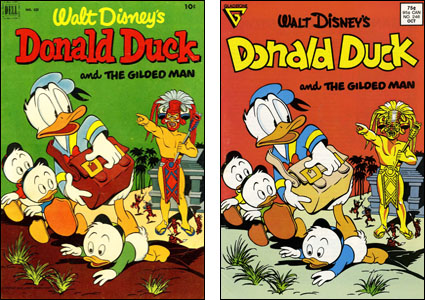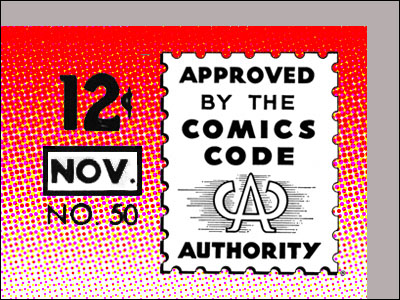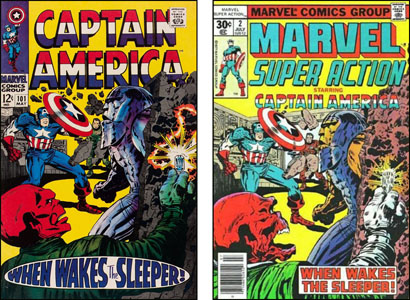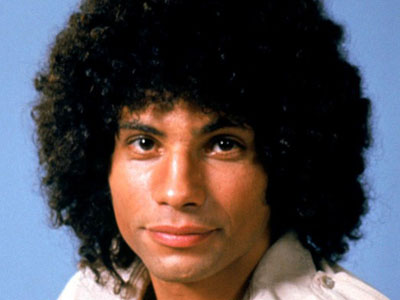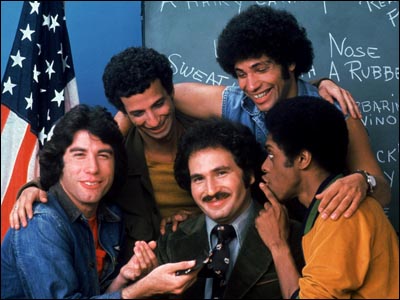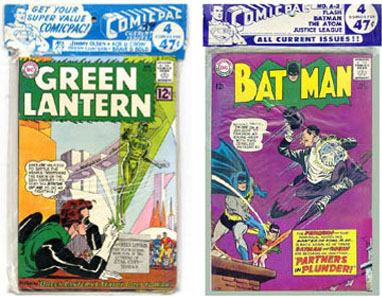
I'd like to retract/expand upon something I said the other day here about Comicpacs, which were the bagged comics that DC sold back in the sixties. For the reasons stated, I didn't like them and neither did any of my friends. That's still true but I made the leap to saying they never sold well and that's not accurate. My longtime friend Paul Levitz, who's now the President of DC Comics, dropped me an e-mail and wrote, in part…
As a "failure" the DC program lasted well over a decade, with pretty high distribution numbers. The Western program was enormous — even well into the '70s they were taking very large numbers of DC titles for distribution (I recall 50,000+ copies offhand). The unknowable factor on the DC program was that a certain number of distributors and retailers simply split the packs open and returned the loose comics, making an arbitrage profit, and distorting the flow of actual sales data so it looked like the packs sold near 100%. There was no clear pattern of these "arbitraged" copies depressing the sell throughs of the regular releases for most of those years, though, until towards the end of the program.
What Paul's talking about is that regular newsstand comics went out to dealers on a returnable basis. The copies your local newsstand couldn't sell went back to the distributor and so the publisher didn't get paid for them. The comics sold in bags were sold on a non-returnable basis and the dealers who got them were supposed to pay for all they got. Instead, some were opening the bags and sneaking the non-returnable issues back into the returnable channels for credit. Western Publishing, which as Paul mentioned was moving tons of bagged comics for a time, dealt with this by printing two editions of each comic — one for the returnable market and one for the non-returnable distribution. Here are two issues of Walt Disney's Comics and Stories as an example…

As you can see, the one on the left has a Gold Key Comics logo in the upper left hand corner. These books were distributed via the returnable channels. The one at right has a logo for Whitman, which was another imprint of Western Publishing. The Whitman books were the ones put in plastic bags and sent to retailers on a non-returnable basis. This way, the recipient of non-returnable comics couldn't ship them back among returnable books. (Before anyone asks: Apart from the cover symbol, the two editions were identical. In fact, they were printed as part of one press run. World Color Press would print enough covers to go on the returnable issues, then they'd stop the presses, change the black printing plate for one with the Whitman logo, then restart the presses to print enough for the non-returnable issues. As far as I can tell, collectors do not value one over the other.)
While we're at it, take a look at these…

As Paul noted, Western not only distributed its comics in plastic bags in the seventies but some of DC's, as well. They put DC's Superman/Muhammad Ali special through that pipeline…not sealed in plastic but sold on a non-returnable basis. And on the non-returnable copies, they replaced the DC bullet with the Whitman logo.
Around 1978, I had a long conversation with the guy at Western Publishing who managed their program of distributing non-returnable comics to retailers. This was a few years before that program collapsed and he was bragging about how his company was the only one who'd ever been able to make that method work. I guess I took his comments too literally and didn't realize that DC had considerable success with it in the sixties and, as Paul notes above, well into the seventies. I still think it was an unpleasant way to sell comics but it did work in certain venues. I believe they managed to get a lot of them into airports, bus and train stations, as well as other outlets that weren't conducive to conventional comic racks. So I was wrong to suggest they'd never sold.
One other thing: At the top of this item, I have photos of two DC Comicpacs and as you may be able to see, the header card lists the comics in each package, though it doesn't tell you which issue you're getting. The one on the left says that the bag contains issues of Green Lantern, Jimmy Olsen, Brave & Bold and Fox & Crow. That's an odd mix, sticking Fox & Crow in there. I bought every comic that came out and loved Fox & Crow as much as I liked my super-hero comics but few comic buyers I knew felt that way. It sounds to me like another reason some kids wouldn't buy Comicpacs.
Well, I think I've exhausted this topic. My apologies for not getting it right the first time and my thanks to Paul Levitz for setting me straight.



